Capitalism Ap World History Definition
AP® World History can be a tough nut to crack. How do you cover tens of thousands of years of history that have spanned all peoples and places across the entire globe? Even reading this question sounds exhausting. Amassing a fat stack of AP® World History flashcards can be a daunting prospect when considering all of the information that you'll need to go through for your upcoming AP® World History exam.
But not to worry; we've created this list of the 50 Frequently Tested AP® World History Terms and Concepts so you don't get lost in that forest of AP® World History time periods. This AP® World History review narrows down all of AP® World History into 50 must-know terms. This is not an end-all be-all study guide, but it's the perfect way to study for those concepts that commonly show up on the exam and the AP® World History document-based questions.
How To Use This AP® World History Review
Before we dive full-force into the list of the 50 Frequently Tested AP® World History Terms and Concepts, we wanted to let you in on how this AP® World History review has been constructed to best help you succeed on your exam. Starting in the 2019-20 school year, AP® World History gained the subheading "Modern," and it ( controversially ) reset the timeline to 1200 CE rather than beginning at 8000 B.C.E.
The College Board has created nine distinct historical periods/eras that the entire AP® World History course has been constructed around. They are as follows:
- The Global Tapestry c. 1200 to c. 1450 (8-10% exam weighting)
- Networks of Exchange c. 1200 to 1450 (8-10% exam weighting)
- Land-based Empires c. 1450 – 1750 (12-15% exam weighting)
- Transoceanic Interconnections c. 1450 – 1750 (12-15% exam weighting)
- Revolutions c. 1750 – 1900 (12-15% exam weighting)
- Consequences of Industrialization c. 1750 – 1900 (12-15% exam weighting)
- Global Conflict c. 1900 – Present (8-10% exam weighting)
- Cold War and Decolonization c. 1900 – Present (8-10% exam weighting)
- Globalization c. 1900 – Present (8-10% exam weighting)
And since the College Board has done it this way, so have we. To find out more on how the College Board has organized the course, we recommend giving the AP® World History Course and Exam Description a read.
Now, let's go ahead and dive right into our AP® World History flashcard terms!
Return to the Table of Contents
The 53 Frequently Tested AP® World History Terms & Concepts
7 Frequently Tested AP® World History Concepts from Unit 1: The Global Tapestry
1. Dar al-Islam
The Dar al-Islam, commonly referred to the House of Islam, is a broad term which refers to those countries where Muslims can practice their religion freely. Think of this term as areas where Islamic law prevails. Founded in the 600s, Islam spread from India to Spain within a few centuries, and the ideology of Dar al-Islam helped establish Muslim caliphates.
Moreover, it allowed for the expansion of trading networks. Within Dar al-Islam, Muslim caliphates conquered and often tolerated different beliefs as long as non-Muslims paid a tax called a jizya. Dar-al Islam is essential to begin understanding Islam and its expansion, and questions involving it will certainly appear on the exam.
2 . Filial Piety
In Confucian thought, filial piety is a central virtue which emphasizes love, respect, and support to one's parents and ancestors. Additionally, it stresses that followers display courtesy, ensure male heirs, uphold fraternity among brothers, and carry out the proper sacrifices after a parent's death.
Filial piety is demonstrated in Confucian stories such as The Twenty-four Cases of Filial Piety , which depict children exercising the tenet and upholding the tradition. Though China contains a multitude of different religious ideas, filial piety has remained a common tradition that runs throughout most of them. It can be difficult managing all the various Confucian concepts, so keep this one as a general rule of thumb.
3. Bhakti Movement
This term encompasses the Hindu devotional movement that flourished in the Medieval and early modern era, emphasizing music, dance, poetry, and rituals as means by which to achieve direct union with the divine. Think of it as a complete surrender to God.
The Bhakti Movement has often been discussed by critics as an influential social reformation in Hinduism, and one that sought to provide an individual-focused alternative path to spirituality regardless of one's birthright or gender. In this way, the Bhakti Movement can be seen as a movement which started with the objective to reform or at least change specific aspects of Hinduism.
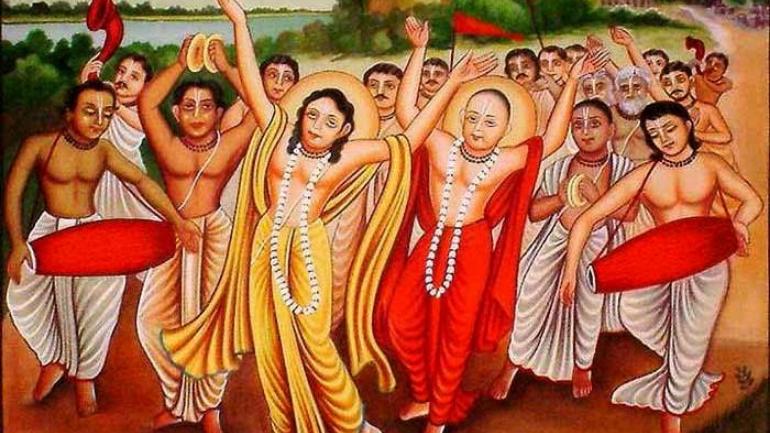
4. Feudalism
The feudal system of the West came about with the fall of the great European empires, especially the Carolingian empire (think France, Germany, the United Kingdom, etc.). When these empires fell, Europe was left with a large and powerful military class without a strong state to govern them.
Between the 9th and 15th centuries, society was structured around a series of exchanges. The military class of knights/vassals agreed with the moneyed lords that they would protect the lord's land in exchange for land. These lands were called fiefs and were tilled and farmed by peasants who were allowed to live on the land in exchange for taxes. This, in a nutshell, is feudalism, and feudalism is essential to understanding the development of the West.
5. Serfdom
Serfdom dovetails nicely into feudalism, as the two go hand-in-hand and are essentially inseparable. Serfdom is a type of labor commonly used in feudal systems in which the laborers work the land in return for protection. However, this logic binded the serf to the land and their ruler. They were often not allowed to leave or pursue a new occupation. Serfdom was common in early Medieval Europe as well as in Russia until the mid 19th century.
6. Foot Binding
Possibly one of the most visible reminders of Imperial Chinese upper-class visions of beauty, foot binding became a symbol of feminine attractiveness and extravagance. In 10th century China, upper-class court dancers began applying painful bindings to young women as a way to stunt the growth of their feet.
The popularity of this act spread as the smaller foot represented not only beauty but the extravagance of the upper classes that did not need to use their feet to work. Often called lotus feet, the practice would not die out until the 20th century.
7. Greco-Roman Philosophy
Though the 2019-2020 AP® World History course begins after Greco-Roman times, understanding their contributions to civilization is essential to understanding world history at large. This is less of a concrete event and more of an essential concept that you'll need to keep in mind for your AP® World History exam.
Where eastern philosophies like Daoism revolved around the natural world, the philosophies of the Greek and Roman empires were often based upon logic, empirical observation, and the nature of political power and hierarchy. Part of the reason for this difference was the Greco-Roman strive from imperial expansion and the quest for practical solutions to political control. This was accomplished with the help of great thinkers like Aristotle and Cicero.
Return to the Table of Contents
7 Frequently Tested AP® World History Concepts from Unit 2: Networks of Exchange
1. The Silk Road
This was an ancient trade route that connected Asia with Europe. It acted as the central artery of cultural, economic, and political exchange that began to take shape around 200 BCE and remained in use until about 1400 CE. It connected many peoples from the Pacific Ocean on the shores of eastern China to those of Western Europe via the Mediterranean Sea.
The road was actually a product of imperial expansion. As the Han Dynasty of China sought to pacify its frontiers, the Emperor Wu sent a military mission out West that would run into the ancestors of Alexander the Great's men. This whole process opened up trade between East and West.
2. Indian Ocean Trade
The Indian Ocean Trade started within small trading settlements around 800 A.D. and flourished by 1400. This trading route actually served as the world's richest maritime trading network alongside the Silk Road, and it forged strong economic, social and religious ties between lands. It is also considered a prime tool in the rapid expansion of Islam throughout the late-Medieval and early-Modern eras. The Indian Ocean Trade also helped birth a plethora of city-states along the African shore as well.
3. Diasporic Communities
A key term to understanding the reasoning and theory behind the dissemination of peoples throughout the world, diasporic communities were f ormed when merchants introduced their own cultural traditions into the indigenous culture where they were selling their goods. Think of diaspora at large as the dispersion of any people from their original homeland.
Some concrete examples of diasporic communities include: Muslim merchant communities in the Indian Ocean region, Chinese merchant communities in Southeast Asia, Sogdian merchant communities throughout Central Asia, Jewish communities in the Mediterranean, Indian Ocean basin, or along the Silk Road.
4. Inca Roads
Around 25,000 miles of roads connected the Inca Empire (1438 – 1533). As with many of the world's empires at this time, the Incas required a way to effectively maintain control, move armies, and facilitate trade across its territories. The result was one of the most impressive feats in pre-Colombian history.
The road itself connected centers of Incan control, ranging from present-day Colombia to Chile. This technological and engineering feat was brought about by the growth of the Inca's imperial power and the desire to instigate trade in commercial goods. But it also represented a significant state project that encouraged economic, political, and social growth simultaneously.
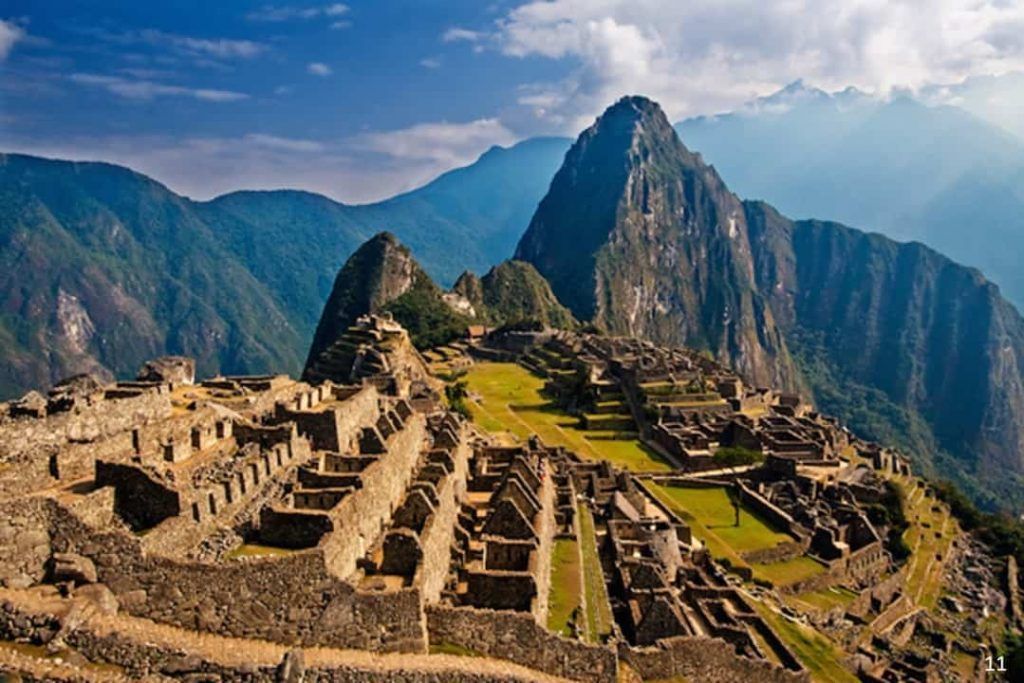
5. Marco Polo
Marco Polo became one of the most famous European travelers to make it to eastern China. He was by no means the first European to do this, but he has become the most famous. In the 13th century, Polo set out to China at the height of the Mongol Empire with the intent of opening cultural and economic trade. He accomplished this after 24 years of traveling.
He provided detailed, lurid, and often embellished accounts of his travels romanticizing his expeditions. Polo's writings about his travels in fact inspired future explorers of the Age of Exploration, including Christopher Columbus.
6. Bubonic Plague
The Bubonic Plague, a.k.a the Black Plague/Black Death, was a devastating global epidemic of bubonic plague that struck Europe and Asia in the mid-1300s. It came to Europe from the Mongol rats during the Middle Ages and devastated Europe's population and economy. To be more specific, it killed ⅓ of Europe's population, an enormous chunk then (and still scary huge on today's standards).
The Black Death also helped end feudalism. Peasants were now free to leave the lands of the lords to try to find higher wages because of the huge labour shortages. The land that had usually been the primary source of wealth was now worthless. It marks a salient moment in the development of European history, life, and even commerce.
7. The Qanat System
These were underground waterways built by the Persian people around the 1st millennium BCE. Without technological advances like this and many other aqueduct systems built in the ancient world, human populations would not have spread so rapidly or easily. The Qanat acts as a representation of the ways that increased crop production of products like cotton and rice encouraged changes in farming and irrigation techniques.
During your AP® World History review before you take your exam, remember that this term is more important to remember as a representation of a larger theme or historical process rather than something you need to know every detail about. You can view the Qanat System in the same vein as the Roman aqueduct, the noria water wheel, and the shaduf well pole.
Return to the Table of Contents
7 Frequently Tested AP® World History Concepts from Unit 3: Land-Based Empires
1. Mercantilism
In order to understand the development of land-based empires, you must have a thorough understanding of mercantilism. Europe was dominated by mercantilist economics, policies, and philosophies throughout the early modern period and the Renaissance. The concept itself created political power through the economy.
Instead of justifying state power via the divine authority of kings or through strict military dominance, mercantilist economic theory argued that governments should regulate that economy and use beneficial trade to oust rival nations. But it also entailed so much more as the mercantilist states often found themselves going to war with one another over resources and resorting to colonial expansion in order to maintain political supremacy. This is the birth of global capitalism.
2. Ivan (IV) The Terrible
While Europe began cultivating economic powerhouses, Russia began cultivating land-based empires helmed by dynastic rulers known as tsars. Ivan The Terrible, technically Russia's first tsar did a ton of important things in Russia's history. Generally put, he confirmed the power of the tsarist autocracy by attacking the authority of the boyars; he continued a policy of expansion; and he established contacts with western European commerce and culture.
By the end of his career, he grew increasingly volatile and paranoid, and lost many of his followers. He killed his only heir, and thus launched Russia into a long-standing Time of Troubles. He is a central figure in the ever-expanding story of Russian history.
3. The Ming Dynasty
A key empire in the development of China, the Ming Dynasty ruled China from 1368 to 1644 A.D. During this time, China's population doubled, and it began to develop into the powerhouse it is today. The Ming Dynasty essentially expanded China's trade and mercantile reputation, and it tied deep networks to the outside world including cultural ties with the West. The Ming Dynasty is also remembered for its developments in shaping a distinctly Chinese culture, drama, literature and world-renowned porcelain. Understanding the succession of the Chinese empires is crucial to unpacking the development of China as a whole.
4. The Qing Dynasty
The final imperial dynasty of China, the Qing Dynasty (1644 to 1911) supplanted the Ming empire, and propelled China further into the powerhouse status it retains today. Ruled for 61 years (the longest of any Chinese emperor) by Emperor Kangxi, Qing-era China saw several substantial cultural leaps, including the standardization of the Han language, funding to develop highly-detailed and meticulous maps, and more.
Kangxi also displayed great military prowess, halting three Han rebellions, continuous invasion attempts by Tsarist Russia, and more. He also cut taxes, attempted to fix corruption and governmental excess through populist-leaning policies and agrarian incentives. The Qing Dynasty is also noted for its isolationism.
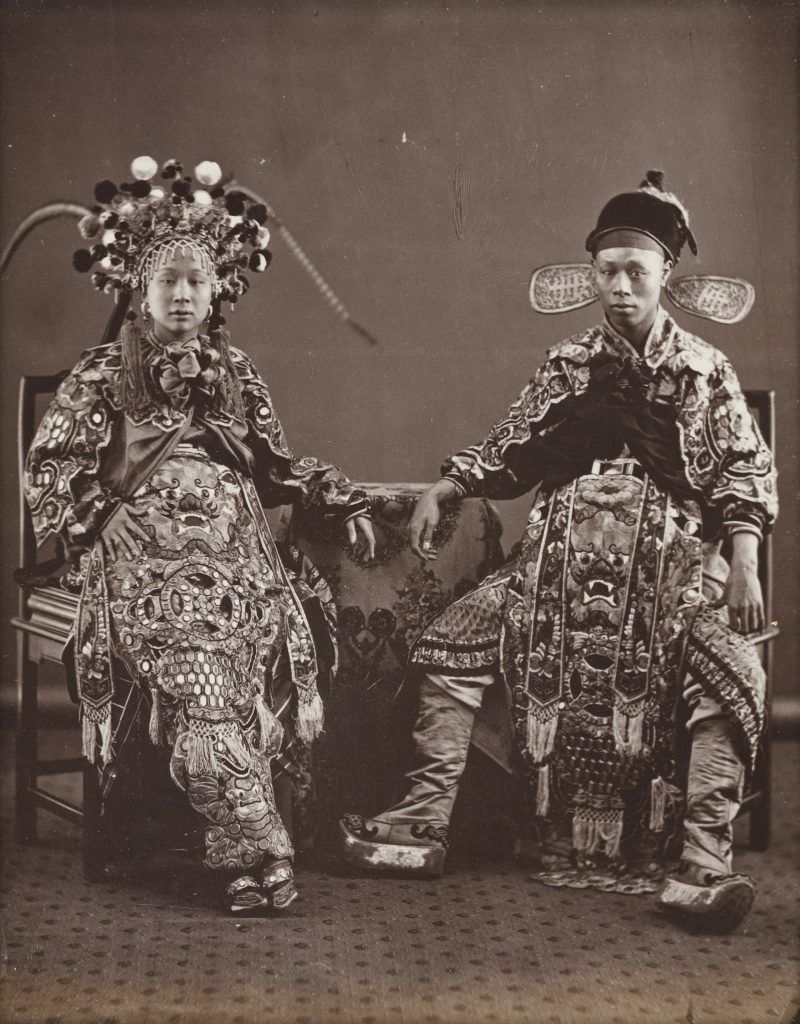
5. The Manchu Empire
The Manchu were the people of what is now called Manchuria. They had always been an ethnic minority under Han Chinese control until they revolted and started the Qing Dynasty in the 17th century. This dynasty would last until 1912.
While in control, the Manchu celebrated their culture and ideas despite being minorities. This included the "queue" hairstyle that became associated with Chinese culture of the elite classes. However, as global influences spread foreign pressure from European put strains on the Empire. Their outsider status proved to be a detriment as many Chinese began to blame these "Manchu foreigners" for giving European powers too much control in their country.
6. The Ottoman Empire
Why did we include this one on the list? Well, the Ottoman Empire was one of the most formidable and lasting dynasties in world history. Created by Turkish tribes in Anatolia during the late fourteenth century, the Ottoman Empire grew into an Islamic superpower that maintained control over huge regions of the Middle East, Eastern Europe, and North Africa for more than 6 centuries.
The Ottoman Empire's power was concentrated within a Sultan, who essentially was given absolute religious, political, and social power over their regions. Mehmed II, perhaps the most famous of the Ottoman sultans, conquered Constinople in 1453 and destroyed what remained of the Byzantine Empire. The Ottoman Empire is an essential component of Middle Eastern history because it lays the foundation for what is to come in more contemporary history.
7. 95 Theses
Though some historians consider the story of Martin Luther and his 95 Theses apocryphal, its narrative still proves deeply important in the context of the Catholic Church. The legend goes like this: On October 31, 1517, German priest and professor of theology Martin Luter nailed a piece of paper to the door of Castle Church. The paper ostensibly contained 95 revolutionary suggestions designed to correct the corruption of the Roman Catholic Church.
One practice that irked Luther in particular was the Church's use of indulgences, or tickets sold by pardoners that granted purchasers "access" to heaven and absolution. Whether the tale is true or false is beside the point, because it is often considered the igniting moment of the Protestant Reformation, a long, drawn-out conflict of religion that would shape Europe throughout the next century.
Return to the Table of Contents
1. Atlantic Slave Trade
The Atlantic slave trade, sometimes called the transatlantic slave trade, or Euro-American slave trade involved the transportation, enslavement, and sale of African people by white slave traders, mainly to the Americas. The slave trade regularly followed the triangular trade route and the Middle Passage, existing from the 16th to the 19th centuries. The trade was responsible for transporting between 10 and 12 million enslaved Africans across the Atlantic Ocean.
Conditions were notoriously brutal and cruelty by slave traders upon slaves was rampant. The ships were overcrowded and unsanitary, with hundreds of Africans packed tightly into columns and rows below decks for a voyage of around 5,000 miles. Understanding the ties between commerce and the sheer horror of the Atlantic Slave Trade is crucial to understanding the connections between global commerce and racism.
2. United Fruit Company
This US company, in the late 19th century, dominated the international fruit and banana trade throughout the early twentieth century. Businesses like the United Fruit Company have been called banana republic due to the amount of influence they exerted towards the politics, economics, and social structures of many Latin American nations. These companies often encouraged the growth of infrastructure, including roads and telecommunications. But they also represented the influence of multinational corporations in the affairs of impoverished countries. Establishments like the United Fruit Company play an integral role in strengthening Western rule over developing countries.
3. Cash Crop
In an era defined by trade, money, and profit, cash was king. Therefore, any crop or agricultural product that created cash flow tended to be produced and then cherished. Perhaps even to a detrimental degree. A cash crop is just that—a crop grown for cash instead of subsistence. Sugar (see The Atlantic System and United Fruit Company) was one of these cash crops. Before the arrival of Europeans into the Americas, sugar plantation was only a small part of the regional agricultural system. But after European arrival, it became the primary crop. These crops had devastating effects on the environment, local economy, and the health of many populations. They also typically included coerced or forced labor systems in order to maximize profit.
4. Joint-Stock Companies
These companies became the house in which capitalism was built and how global trading flourished. In the 15th century, European businessmen, investors, and politicians were getting together to invest in companies premised upon stock ownership. The amount of stock you received depended on how much money you invested. And the amount of stock you owned defined how much sway you had in the company itself. These businesses helped to fund exploration projects throughout the world, where investors worked with colonists to extract goods from various locales for profit. One of the most famous of these was the British Virginia Company that began the English colonization of North America.
5. East India Company
Spain and Portugal held a monopoly over the East Indian spice trade until the defeat of the Spanish Armada by England. After this, England decided to gain a piece of the profit by forming the East India Company, setting up trading posts throughout the East and Southeast Asia.
However, the East India Company quickly became much more than a mere trading organization. The company eventually started establishing political strongholds and acted as an active agent of British imperialism in India for almost two centuries, marking one of global history's most tumultuous and problematic periods of East meets West. Unpacking the significance of Britain's influence on the East lies almost directly in understanding the affairs of the East India Company.
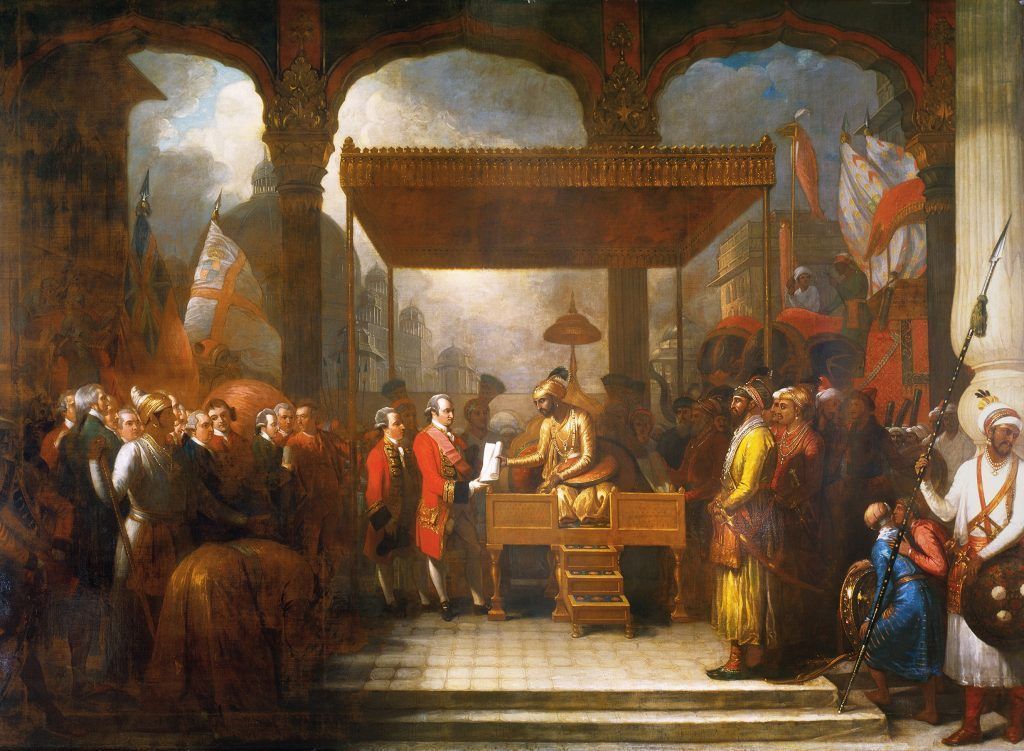
Return to the Table of Contents
5 Frequently Tested AP® World History Concepts from Unit 5: Revolutions
1. Pueblo Rebellion
Though the Pueblo Rebellion (1680) technically predates Unit 5's timeline of 1750-1900, it essentially lays the framework for the next few centuries where revolution makes frequent appearances. The Pueblo Rebellion was an organized revolt of Pueblo Indians against Spanish Rule in New Mexico. Though a peaceful people, the Pueblos had endured too much trauma at the hands of the Spanish, including forced Catholicism, severe punishments, and the burning of their land and sacred objects.
On Aug. 10, 1680, the Pueblos launched a revolt that left 400 dead, forcing the Spanish to flee. The Pueblos celebrated by removing the traces of Christian baptism from their spaces, churches, and buildings. This rebellion marks an early moment of a soon-to-be tumultuous timeline.
2. Montesquieu
Montesquieu has often been considered one of the great thinkers of the Enlightenment . Born in 17th century France, Montesquieu became an influential lawyer, political thinker, and author. He helped to coin the term despot, which he used to criticize the rulers of Europe at that time. He also celebrated republican visions of the separation of powers and constitutionalism.
He argued that the citizenry of a state had a contractual relationship with the government to obey its authority in exchange for protection and law-based rights. Big thinkers like Montesquieu would help to give intellectual breath into the lives of the American and French Revolutions . In order to fully comprehend the wave of rebellions after 1700, you must have a strong grasp on the central tenets of the Enlightenment, and Montesquieu is a go-to.
3. American Revolution
You are probably fairly familiar with the American Revolution, but we've included it on this list because, like the French Revolution, it perfectly encapsulates the spirit of the revolutionary era. On July 4th, 1776, the American Colonists, fed up with a variety of Great Britain's widespread abuses included but not limited to taxation without representation, the Quartering Act, violence inflicted upon colonists by British soldiers, and more, declared revolution against their progenitors.
The American Revolutionary War lasted from 1775 to 1783, with the colonists, now Americans, securing victory. The American Revolution is key to global history because it was one of the largest revolutions to transport Enlightenment ideals into real-life revolution, as the entire event was directly influenced by American pamphleteers like Thomas Paine who, in turn, borrowed from Enlightenment theorists like John Locke and Immanuel Kant. It also laid the groundwork for the French Revolution.
4. French Revolution
This is an essential, complex, and extremely multi-faceted event, but it is imperative that you have a basic understanding of it in order to score well. Here's a basic outline: during the 18th century, the French monarchy became increasingly absolute and despotic, a disposition which was exacerbated by King Louis XVI's poor economic policies, an expanding maldistribution of wealth, and a series of ruinous crop failures.
The Third Estate, a new(ish) political force composed of France's non-aristocratic people, gained momentum with rhetoric inherited from the Enlightenment which aimed to topple France's ruling class. On July 14, 1789, the Third Estate (now morphed into an even more formidable force called the National Assembly) stormed the Bastille and demanded reform. It gets way, way more complicated (and bloody—the guillotine becomes the National Assembly's tool of choice in executing the aristocratic class) than this, but this should be a nice primer. Check out this documentary for a more thorough explanation.
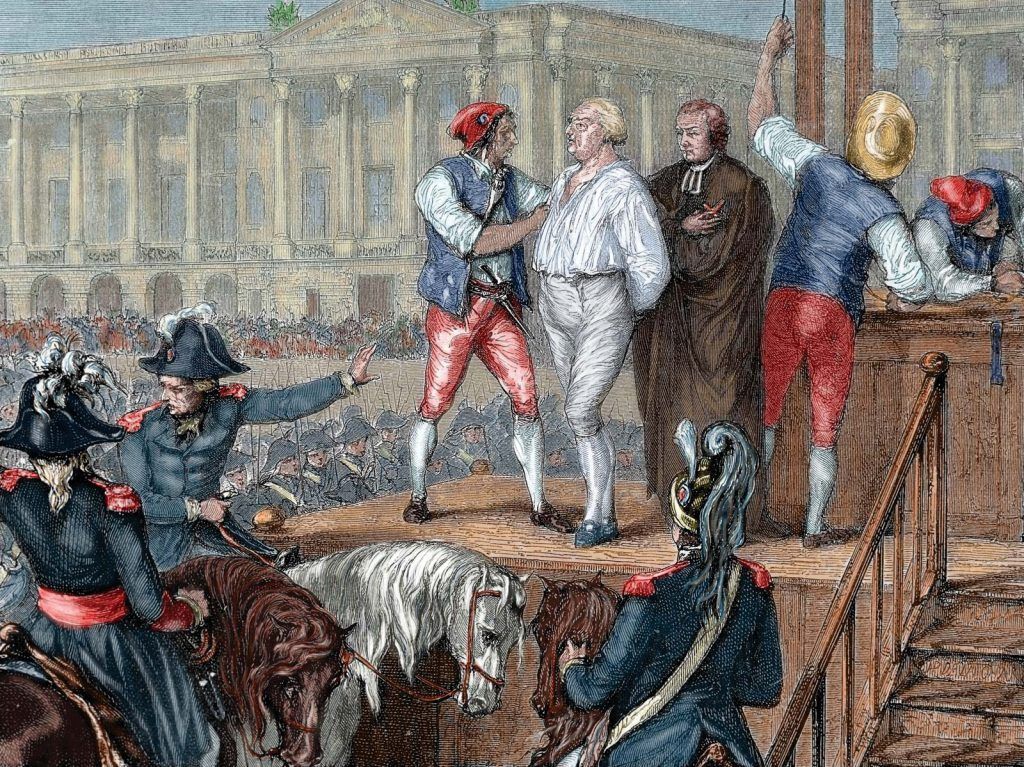
5. A Vindication of the Rights of Women
Mary Wollstonecraft wrote her A Vindication of the Rights of Woman in 1792. This work contains one of the earliest arguments for a feminist philosophy although the term feminist would not have been used at this time). Wollstonecraft used Enlightenment ideals regarding freedom and equality to argue that women deserved the same fundamental rights as men.
She argued that women were essential to the nation because they educated children, that women deserve the right to an education, and that women should be seen as companions to men rather than ornamental wives. Wollstonecraft's book became a symbol for the feminist movements that developed in the 19th and 20th centuries, and thus, a significant work of revolution indebted to the ideas proffered by the Enlightenment.
Return to the Table of Contents
5 Frequently Tested AP® World History Concepts from Unit 6: Consequences of Industrialization
1. Social Darwinism
Social Darwinism is a sociological theory stemming from, you guessed it, Charles Darwin, the biologist. This theory posits that individuals, groups, and peoples are subject to the same Darwinian laws of natural selection as plants and animals. Basically put, it's the belief that only the fittest survive in human political and economic struggle.
Now largely discredited, social Darwinism was advocated by the West in the late 19th and early 20th centuries and was used to justify political conservatism, imperialism, and racism and to discourage intervention and reform. It is an ideological framework that helped accelerate industrialization.
2. Spheres of Influence
Since industrialization is directly tied to global expansion, the idea of spheres of influence is essential in understanding the modernization of the world during the 18th centuries onward. The phrase comes from the field of international relations, and it denotes a spatial region or concept division over which a state or organization has a level of cultural, economic, military, or political exclusivity.
Huh? Well, to put it more simply, spheres of influence are areas in which countries have some political and economic control but do not govern directly (ex. Europe and U.S. in China). Within these spheres, nations can exert their influence and control in order to reap benefits. This relationship is integral to industrialization.
3. Karl Marx
While Marx is often considered a seminal German philosopher, his work attempts to leap out from the theoretical boundaries of philosophy and bring about change in the so-called real world. His works, of which the most famous are The Communist Manifesto and Das Kapital , inspired the foundation of many communist regimes and revolutionary movements in the twentieth century. It is hard to think of many who have had as much influence in the creation of the modern industrialized world.
Marxism is an extremely complicated and intricate school of social theory, but it is best that you understand at least the basics. Think of Marxism broadly as two related theories: Marx's theory of history, and his theory of capitalism. Marx's theory of history, what's been called historical materialism, proffers the idea that history (the rise and fall of societies) stems from a series of class struggles rooted in capitalist modes of production. Marx's economic analysis of capitalism revolved around the labor theory of value, the idea that the value of a commodity was determined by the average number of labor hours necessary to produce it. Marx's theories play integral roles in developing a body of thought critical of industrial capitalism.
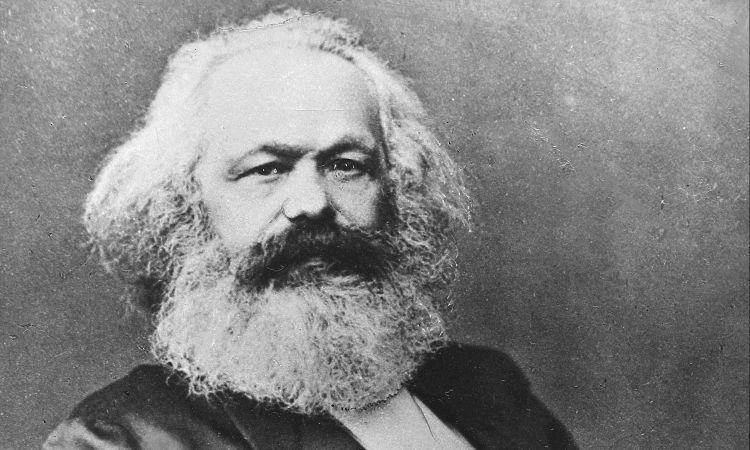
4. Convict Labor
Convict labor was drafted in response to overcrowded prisons. Essentially, the practice went as follows: criminals were forced into public service and manual labor. The practice often used disciplinary methods and created living and working conditions reminiscent of slavery where prisoners were housed and treated like animals. There was a high mortality rate.
Australia saw a large growth in population during the 19th century as a direct result of convict labor, which actually led to an Australian gold rush and, eventually, a mass migration to the island. Convict labor represented a new sense of slavery, and drew further parallels between servitude and capitalism.
5. Chinese Exclusion Act
Designed to stop the influx of Chinese immigrants to the United States, and particularly to California, The Chinese Exclusion Act of 1882 suspended Chinese immigration for ten years and declared Chinese immigrants ineligible for naturalization. Though Chinese-Americans already in the country challenged the constitutionality of the discriminatory acts, their efforts failed. It was one of the most significant restrictions on free immigration, and it prevented the US from receiving labor from a substantial source. It is significant because it points toward the ties between racism and industrialization.
Return to the Table of Contents
7 Frequently Tested AP® World History Concepts from Unit 7: Global Conflict
1. Great Depression
Though technically restricted to America, the Great Depression had devastating consequences that set the ball in motion for subsequent global catastrophe. The Great depression began with the collapse of the US stock market in 1929, initiating a period of worldwide economic stagnation and depression. Sharp declines in income and production occurred as buying and selling slowed down. Widespread unemployment reigned supreme.
On the global scale, countries raised tariffs to protect their industries, and America stopped investing in Europe. The great depression led to a loss of confidence that economies were self adjusting and destabilized the world, and it would lead to a widespread economic discontent that would give rise to facism.
2. Facism
In order to fully comprehend the reasons behind the global conflicts of modernity, you must have a strong grip on the form of government known as fascism. Facism is a form of far-right, authoritarian hyper-nationalism characterized by dictatorial centralized power, forcible suppression of opposition, and a strong regimentation of society and the economy. This form of rule gained popularity in Europe during the 20th century, and it led to two global catastrophes: WWI and WWII.
Simply put, facism is a form of government that is ruled by an authoritarian leader, and they are often a totalitarian one-party state. They aim to prepare for armed conflicts, and spread rule. Think Hitler, Mussolini, etc. Facisim during the 20th century led to a plethora of global horror, and it almost brought the world to a total standstill.
3. Paris Peace Conference
The Paris Peace Conference was an international meeting held in January 1919 at Versailles. It was designed to establish peace after WWI and to essentially rebuild Europe after the devastation of war. Much of the conference was dominated by the "Big Four," Great Britain, France, the United States, and Italy. The Big Four helped create the Treaty of Versailles which effectively ended WWI and argued for the construction of a League of Nations that would serve as an international forum and an international collective security arrangement.
Additionally, the Treaty of Versailles awarded German and Ottoman overseas possessions as "mandates" to members of the British Empire and to France and Europe underwent a renewed drawing of national boundaries. And Germany was hit with reparation fees and punishments. The Paris Peace Conference and the Treaty of Versailles would lay the foundation for the next global war, WWII, so it is a significant component of world history.
4. The Holocaust
You are probably already familiar with The Holocaust but it is too essential of an event to leave off this list. The Holocaust was a methodical plan orchestrated by Adolf Hitler during WWII to ensure German/Aryan supremacy. It called for the systematic murder of Jews, non-conformists, homosexuals, non-Aryans, and the mentally and physically disabled, and it culminated in the death of 11 million people. It represents one of the darkest moments in history, and it reveals something horrible lurking at the essence of modernity. It also marks a significant turning point in political, social, and cultural world history, representing something of a near-apocalypse. 20th-century critical theorist Theodor Adorno famously wrote, "To write poetry after Auschwitz is barbaric." Indeed, the Holocaust undid the notion that man is inherently good.
5. Russian Revolution of 1917
By the 20th century, Russian citizens have grown tired of an increasingly corrupt, incompetent Tsar regime, and the anger was exacerbated by a famine and a horrible military performance in WWII. This discontent led to the Russian Revolution which occurred in two successions. The first wave toppled the imperial government, and the second placed the Bolsheviks (a far-left, revolutionary Marxist faction founded by Vladimir Lenin) in power.
A succession of power struggles, infighting, mismanagement, and more conflict would follow, ultimately leading to the rise of Joseph Stalin and the USSR. It essentially sets the stage for the rest of Russia's development in the 20th century, so it is a super important moment to memorize.
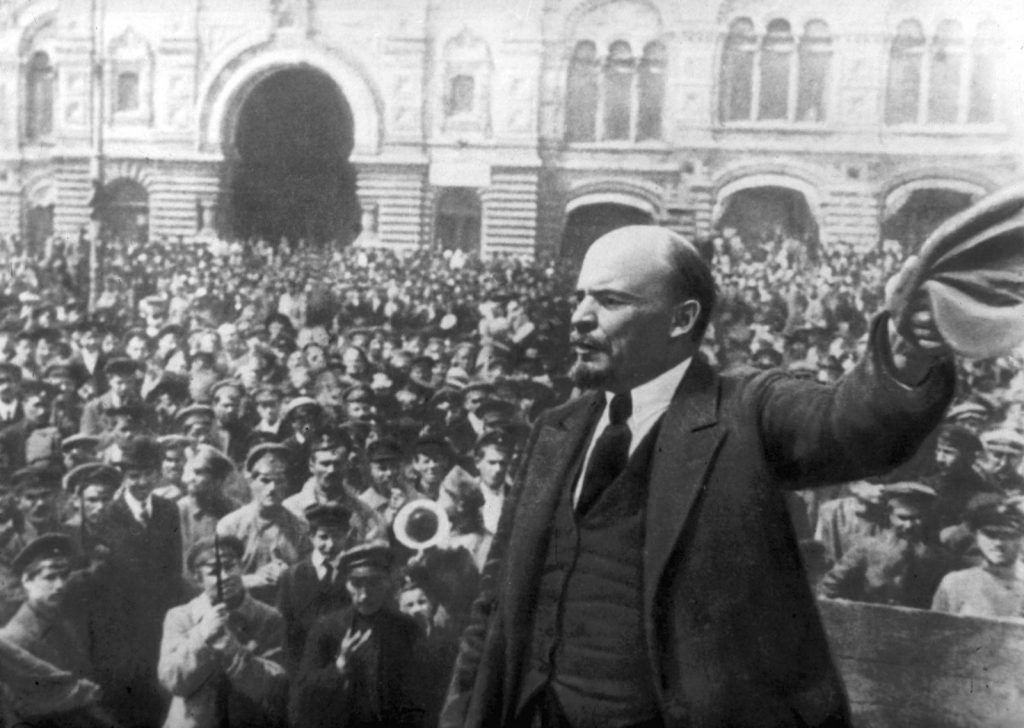
6. Nationalism
Put simply, nationalism is a strong feeling of pride and devotion toward one's country. Of course, this concept can be a good thing as it ties citizen to country, and the personal to the political, ultimately achieving a shared sense of community stemming from national solidarity. However, nationalism in extremity can be extremely dangerous to the well-being of a nation, and it can lead to war. Many of the facsist movements of the 20th century were directly tied to periods of intense nationalism, where anger, entitlement, and xenophobia culminated in extreme national pride. Check out this Time article on WWII and nationalism . Nationalism is simple enough on its surface; but articulating and analyzing how it surfaces, what it affects, and how it can be dangerous is tricky.
7. Spanish Civil War
In 1936, a rebellion helmed by right-wing Spanish military officers erupted in Spain after a coalition of Socialists and Communists was elected to run the country. The revolt quickly became a full-blown civil war. The military officers, led by Francisco Franco, gained financial and material support from Germany, and began launching assaults against the left-leaning government forces who received financial and material assistance from Russia. The Civil War lasted for about three years, ending with a victory for Franco.
This conflict is frequently called "a dress rehearsal for WWII as it represented a conflict involving class struggle, a war of religion, a struggle between dictatorship and republican democracy, between revolution and counterrevolution, and between fascism and communism.
Return to the Table of Contents
5 Frequently Tested AP® World History Concepts from Unit 8: Cold War and Decolonization
1. Indian National Congress
In the 1920s and '30s the Congress Party, led by Mohandas Gandhi, began advocating nonviolent noncooperation against the British government ruling India. From this movement came the Indian National Congress, often referred to as the Congress Party, a broadly based political party of India. During its first several decades of operation, the Congress Party passed moderate reform actions, while many were becoming radicalized by poverty stemming from British imperialism.
In the early 20th century, some of the party started to endorse a policy of swadeshi ("of our own country"), which called on Indians to boycott imported British goods and promote Indian-made goods. By 1917, the more radical "Home Rule wing" had begun to exert significant influence within the country by appealing to India's diverse social classes. The creation and subsequent successes of the Indian National Congress pointed toward an era decolonization that was to come.
2. Decolonization
Decolonization is the undoing of colonialism, the latter being the process whereby a nation establishes and maintains its domination on overseas territories. Between 1945 and 1960, nearly 36 dozen new states in Asia and Africa achieved autonomy or outright independence from their European colonial rulers through either revolution, peaceful compromise, nonviolent protest, or something else.
These new countries responded to decolonization in various ways. Some newly independent countries acquired stable governments almost immediately; others were ruled by dictators or militaristic forms of government for decades, and some faced long civil wars. And on the European side, some governments welcomed a new relationship with their former colonies while others contested decolonization with military intervention. This term is an essential vocabulary word.
3. Ho Chi Minh
Ho Chi Minh will most famously be remembered for being the Vietnamese Communist revolutionary leader during the Vietnam War. But he also represented much more. His movement mimicked other decolonization efforts across the globe after World War II. In particular, he turned to the leaders of the democratic world, including the US and France, for help to become a sovereign nation. But in their denial, he turned to revolution as a response.
He also represented the Cold War binaries that decolonization efforts ran into in their efforts for sovereignty. He was stuck between the Communism of Russia and the Democracy of the United States. The war itself would turn out to be a major blight in France and the United States' histories, leading to social and political pressure against efforts in colonialism and Cold War interventionism.
4. Iraeli-Palestinian Conflict
In November 1947, the United Nations (the UN) voted to divide the British mandate of Palestine into a Jewish state and an Arab state. Almost immediately, violent clashes emerged between Jews and Arabs in Palestine. As British military began exiting Palestine, conflict continued to escalate, with both Jewish and Arab forces committing violence upon each other. Both sections argued and fought for total sovereignty.
Among the most infamous events was the attack on the Arab village of Dayr Yāsīn on April 9, 1948. The news of a brutal massacre there spread widely and inspired both panic and retaliation. Days later, Arab forces attacked a Jewish convoy headed for Hadassah Hospital, killing 78. This back-and-forth violence continues to this day, and makes for much of the violence in the Middle East.
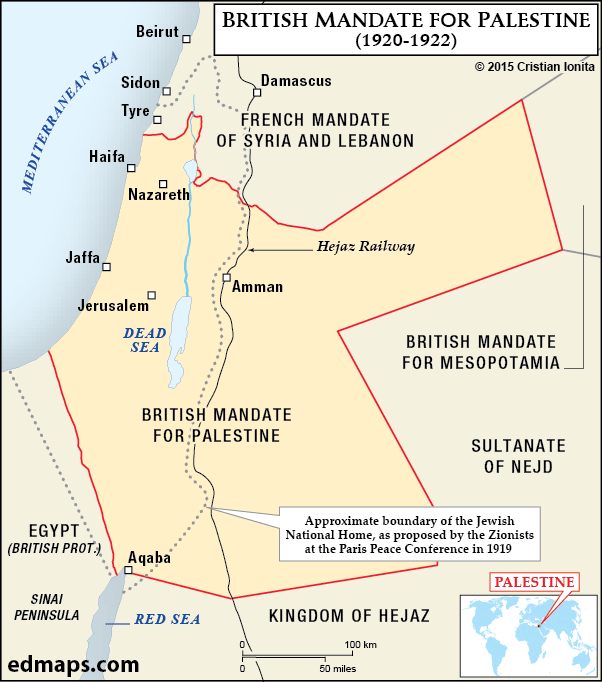
5. Proxy War
Proxy wars essentially, one might argue, make up the majority of military outbreaks after WWII. A proxy war is an armed conflict between two states or non-state actors which act on the instigation or on behalf of other parties that are not directly involved in the hostilities. In other words, a proxy war is a war instigated by a major power that does not itself participate.
Think of the Spanish Civil War, the many skirmishes between the USSR and the United States in the Middle East, Eastern Europe, and perhaps even the Vietnam War at large—in a way. Proxy wars are significant because they are so complex. They allow national powerhouses to compete with each other without directly competing with each other. This sort of wartime deception is a crucial component of recent history.
Return to the Table of Contents
5 Frequently Tested AP® World History Concepts from Unit 9: Globalization
1. Military-Industrial Complex
This term became popular after American President Dwight D. Eisenhower used it in his 1961 presidential address to the nation. During that address, Eisenhower warned his listeners that the intimacy between the defense industry and the nation's military could potentially lead to some very serious and dangerous policy decisions on part of the US government. In other words, he warned that technology companies could easily profit off of war and thus encourage war for more profit. Protesters of the Vietnam War, in particular, used this speech as a way to criticize the US's presence in the region.
Today, the military-industrial complex is often evoked in conversations surrounding Western military intervention, the US prison system, and the overall motivations of global military action. It's an essential concept if you want to begin unpacking the complexity of the "now."
2. Pan-Africanism
Pan-Africanism has been less of an event and more of an intellectual movement of the 20th and 21st centuries—it's an essential concept today. Built around the notion that all people of African descent have a shared history, they too have a shared destiny for the future. The movement itself has been particularly strong in Central and North America where the African Slave Trade affected entire populations.
Using a shared history of enslavement, Pan-Africanism finds empowerment in an African identity. The beliefs have been diverse, though, ranging from Rastafarianism to Black Power. The African Union can also be seen as an instance of Pan-Africanism. Pan-Africanism has led to surge in black empowerment movements and ideologies that have helped shape the 20th and 21st century.
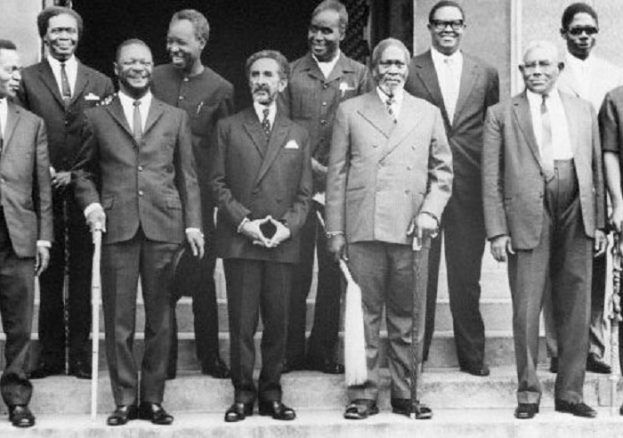
3. Green Revolution
Unlike the Russian Revolution or the American Revolution, the Green Revolution did not involve violence or warfare. This was a revolution in the technology of agriculture and how food was being produced. Between the 1930's and 1960's, a series of innovations completely altered how food was grown and produced across the world.
New disease resistant and high-yielding varieties of crops were being developed, particularly for wheat, corn, and grains. The result has been that nations have been able to grow more than what has been required to feed their populations, leading to a growing agriculture industry and increased access to food across the world.
4. World Health Organization
Established in 1948, the World Health Organization (the WHO) is a specialized agency of the United Nations responsible for international public health. They follow a central constitution which emphasizes "the attainment by all peoples of the highest possible level of health." It is headquartered in Geneva, Switzerland, with six semi-autonomous regional offices and 150 field offices worldwide.
Furthermore, The WHO's central objective includes advocating for universal healthcare, monitoring public health risks, coordinating responses to health emergencies, and promoting human health and well being.It provides technical assistance to countries, sets international health standards and guidelines, and collects data on global health issues through the World Health Survey. Its inception represents an important moment in global cooperation to promote health.
5. North American Free Trade Agreement
The North American Free Trade Agreement, often referred to simply as NAFTA, was an agreement signed by Canada, Mexico, and the United States which created a trilateral trade in North America. The agreement came into force on January 1, 1994 and eliminated most tariffs on products traded between the three countries, with a major focus on liberalizing trade in agriculture, textiles, and automobile manufacturing. The deal also sought to protect intellectual property, establish dispute resolution mechanisms, and, through side agreements, implement labor and environmental safeguards. NAFTA is significant because it establishes a commercial link between the countries of North America that would help define commerce during the next decade.
Return to the Table of Contents
Wrapping Things Up: The Ultimate List of Frequently Tested AP® World History Terms
Managing all of the information within all of the AP® World History periods can be a bit of an intellectual overload. You are, after all, attempting to digest thousands of years of developments and processes not just on the national scale but throughout the entire globe. It's a difficult task to say the least.
But acing the AP® World History exam can be done! Stick with this list of 50 Frequently Tested AP® World History Terms and you'll be on your way getting a 5 on your exam.
We've not only covered AP® World History flashcard terms from the ancient past to the present moment, but we have engaged in regions all over the globe. On top of this, we have provided key AP® World History terms for not only must-know events, but also some that represent the most important concepts that you'll need to know for your AP® World History exam. With practice and preparation, you can ace this exam!
If you enjoyed this post, you may also like our AP® World History tips or our AP® World History review guide .
Capitalism Ap World History Definition
Source: https://www.albert.io/blog/frequently-tested-ap-world-history-terms-and-concepts/